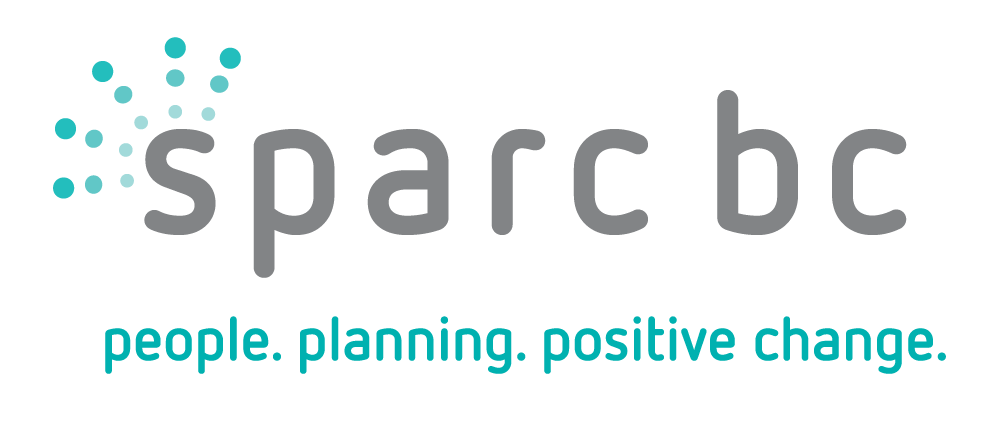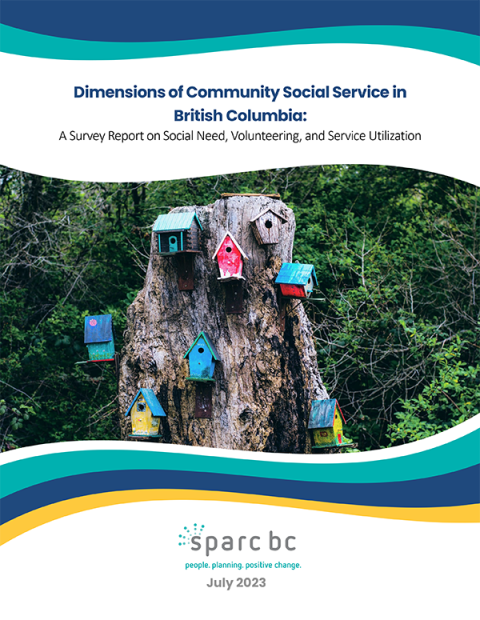Dimensions of Community Social Service in BC:
A Survey of Social Need, Volunteering, and Service Utilization
Home » Partnerships » Dimensions of Community Social Service in BC: A Survey of Social Need, Volunteering, and Service Utilization
The community social services sector in BC is comprised of over 30-thousand non-governmental organizations delivering services and resources across the province in a multitude of areas. These range from early years and youth development services to dignified access to food and housing (and more). Our understanding of how British Columbians engage with and support the sector (e.g., through volunteerism), and which segments of the population may reflect the greatest health equity and social development needs, has been limited.
In response to this knowledge gap, SPARC BC has completed the first wave of a longitudinal survey study entitled Dimensions of Community Social Service in British Columbia. In it, you will find insights from over 5,000 British Columbians (18+) on a range of topics including demographics, geographics, health-related social needs, volunteerism, and community social service utilization (as well as a host of emerging predictive factors).
Download the full report here:
hIGHLIGHTS
Health-Related Social Needs
Health-related social needs, reflecting potential social development needs, can include things like the sense of community belonging, mental health, income security, housing precarity and homelessness, food security, access to transportation, energy security, loneliness and social isolation, physical, mental or emotional difficulties in everyday life, and personal safety. In many instances (but not all), significant associations with the indicators described above were identified amongst those experiencing elevated mental health concerns, those between the ages of 18-34 years, those self-identifying as Indigenous and Black, those without a high school diploma or General Education Diploma (GED), students, those who were unemployed and looking for work, those with low levels of household income (i.e., <$50,000, typically less than $20,000), and those living in some locations characterized by rural and/or remote communities.


Volunteerism
While seniors (65+ years) made up the biggest group of past year volunteers (24.5%), the age group with the greatest likelihood of volunteering were young adults (18-24 years). The motivation to volunteer also differed by age group. For instance, young adults were more driven by career motives (i.e., volunteering as a way to improve career prospects), whereas seniors were more likely to adopt social motives (i.e., volunteering as a way to develop and strengthen social ties) and enhancement motives (i.e., volunteering to help the ego grow and develop).
Other groups with a higher likelihood of past year volunteering included respondents self-identifying as Black, those with Master’s and Doctoral degrees, students, those earning between $100,000 and $149,000 and those earing $200,000 or more, respondents who perceived their past community social services experience as somewhat or very important, and key jurisdictions (Campbell River, Dawson Creek, Salmon Arm, and Terrace).
Non-volunteers were more likely to be those 45-54 years of age, those self-identifying as East Asian, Latin American, Southeast Asian, homemakers, and those earning $19,999 or less. Among East Asians and Southeast Asians, not having enough time was cited as the most common reason. Among Latin Americans and homemakers, not knowing how to get involved was most likely cited. Finally, low-income earners were less likely to volunteer due to the perceived financial cost and health problems that acted as barriers.
Community Social Service Utilization
Significant demographic patterns and persistent health-related social needs emerged in relation to community social service utilization across most service areas. For instance, those between the ages 18 and 24 were more likely to report past service engagement in all areas except family services. Higher educational attainment, particularly those with Master’s and Doctoral degrees, were also more likely to report community social service utilization. Geographically, respondents located in Campbell River were twice as likely to report community social service utilization across all areas, except for women’s services. The most striking finding, however, was that almost every indicator of health-related social need (from housing precarity to food insecurity, transportation insecurity, energy insecurity, cognitive and physical difficulties, and more) were strongly predictive of general community social service engagement.

SPARC BC thanks the Ministry of Social Development and Poverty Reduction for its $1.5 million contribution, as part of the Social Services Sector Roundtable’s ongoing work to improve social services for the province. A portion of this grant has been used by SPARC BC to develop this survey research.

